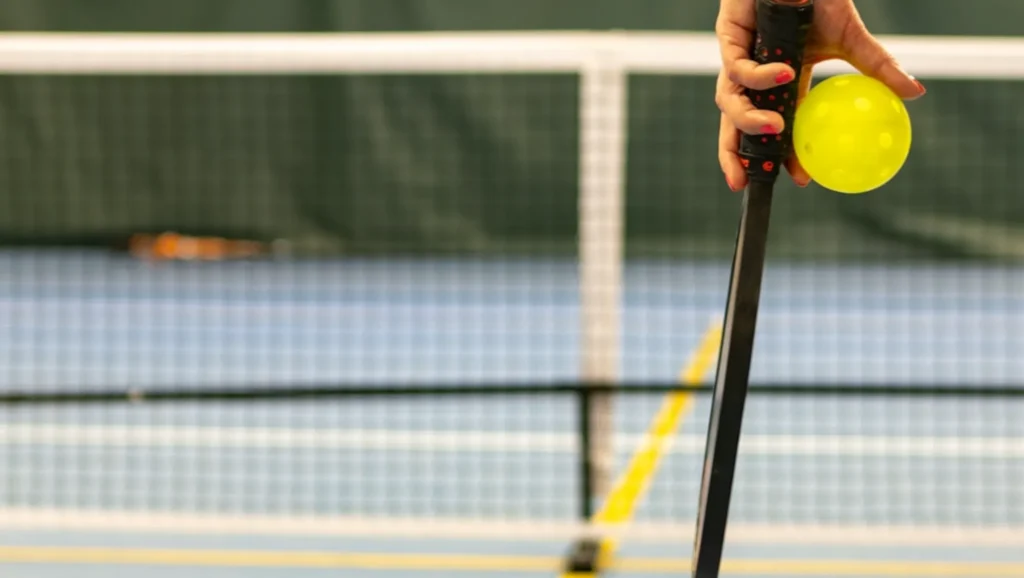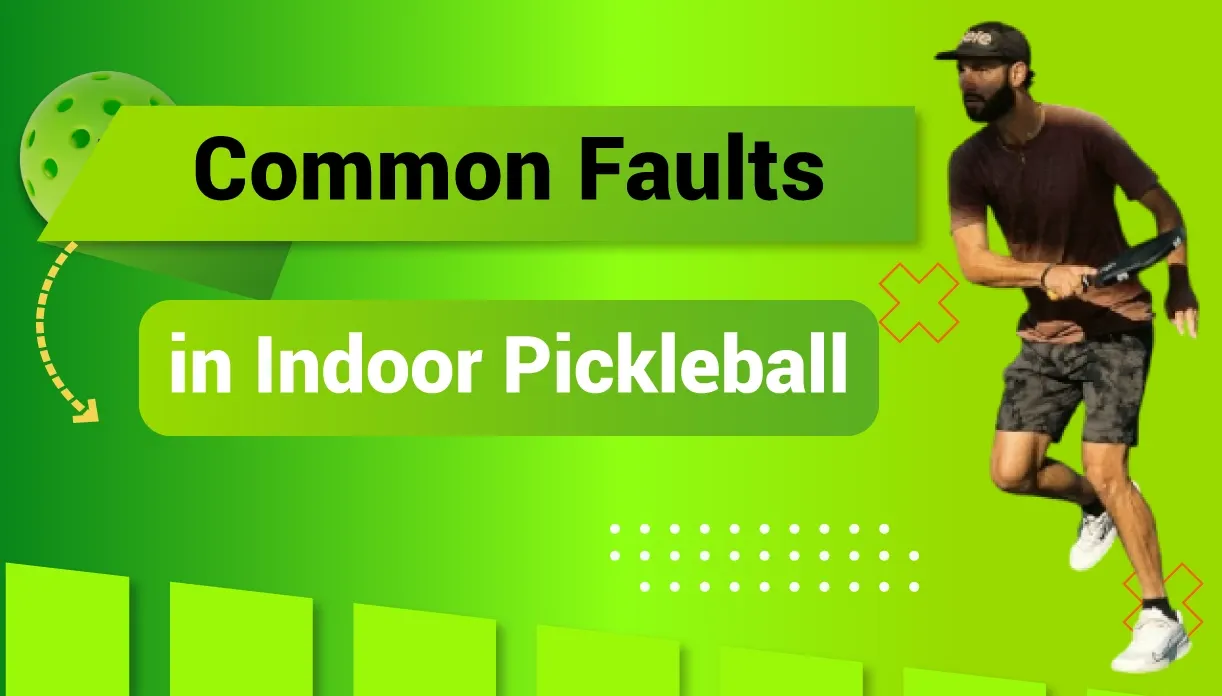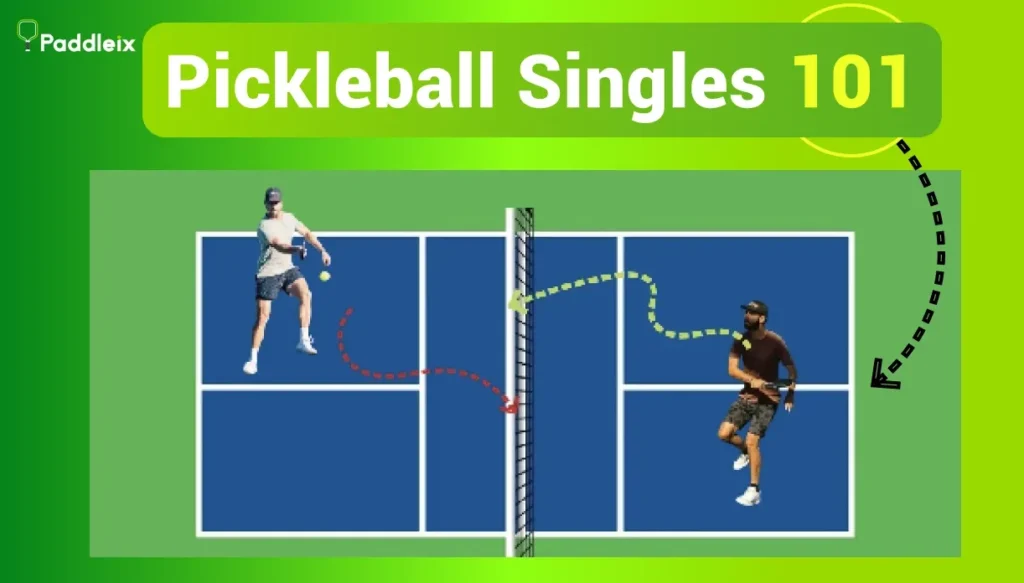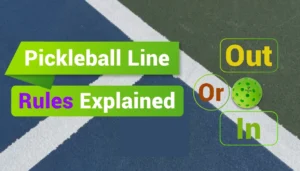Hey there! Imagine we’re meeting up at the local indoor pickleball court. The air is alive with that familiar echo of paddles hitting balls, and we’re ready to dive into a game of singles pickleball—just you, me, and the whole court to cover.
So what’s different about indoor singles? In short: the rules are mostly the same as doubles, but the game is faster, more physically demanding, and way more strategic since it’s one-on-one and you’re covering the entire court by yourself.
Indoor singles is its own kind of thrill. It’s fast, it’s strategic, and yes, it’s a workout (fair warning, bring water).
When I first tried indoor singles, I had to laugh at how quickly I was sprinting across the court, feeling both exhilarated and a little out of breath. But once I got the hang of it, I was hooked.
So, let’s get you feeling ready to step onto that indoor court like a pro. We’ll go over the rules, some sneaky strategies, and those indoor quirks that make singles so fun.
By the end of this, you’ll know exactly how to play indoor pickleball singles—and maybe you’ll even have a few stories of your own to share.
Basic Rules of Indoor Singles Pickleball

First things first, indoor singles follows the same court setup as doubles, so the court is a standard 20 feet wide and 44 feet long. But here’s the catch: you’re covering all that ground alone.
No partner to rely on, which makes the game feel way faster and keeps you constantly on your toes.
Equipment Needed:
In indoor singles, your equipment can make a difference, especially the type of pickleball you’re using.
Indoor pickleballs have smaller holes than outdoor ones, so they don’t get pushed around as much by any stray gusts of air conditioning.
And if you’re playing on a polished wood floor, get some solid court shoes with good grip. Trust me, slipping mid-sprint on an indoor court is about as graceful as a giraffe on ice skates (yep, been there).
Serving Rules and Sequence for Indoor Singles
Alright, here’s where things get interesting. In singles, your serve is everything—it sets the pace for the point and keeps your opponent guessing.
- Start on the Right Side: Just like doubles, you’ll serve from the right side if your score is even, and from the left side if it’s odd. I like to think of it as the “right-even” rule to keep it easy.
- Serve Underhand and Cross-Court: In pickleball, serves are underhand and need to cross diagonally to your opponent’s service box. Sounds simple, but on an indoor court, you have to consider how the ball will bounce differently depending on the floor type. I remember one time I hit what I thought was a perfect serve, only for it to slide a bit too far because of the court’s slick surface. It’s a lesson in precision!
- Scoring and Turnover: Only the server can score, and if you fault, the serve goes to your opponent (called a “side-out”). A quick tip here: Always call the score loudly, especially indoors. Courts can get noisy, and if you’re anything like me, you don’t want any confusion on who’s winning!
Indoor Singles Scoring: How It’s Different from Doubles
Singles scoring is as simple as it gets: two numbers only. The first number is the server’s score, and the second is the receiver’s. So, if you call out “3-2,” that means you have 3 points, your opponent has 2, and you’re serving. No need for the third number that’s used in doubles.
Winning the Game: Typically, you’ll play to 11 points, but you have to win by 2. This rule keeps things suspenseful, especially when the score gets close! I once had a match go all the way to 15-13, and let’s just say my legs were feeling it the next day.
Mastering Indoor Positioning and Footwork in Singles
With indoor singles, your positioning and footwork can be the difference between victory and huffing around the court. I learned this the hard way—running all over the place like a pickleball newbie until I figured out some strategies.
- Stay Centered: After every shot, return to the middle of the court. This gives you equal access to both sides. Think of it as your home base. Your goal? To make your opponent feel like they’re doing all the work while you’re strategically waiting for your next shot.
- Footwork Drill: Try a side-to-side shuffle drill within the service box before your game. Set a timer for a minute and see how many quick shuffles you can get in. This warms you up and gets your feet ready for those quick indoor moves.
- Kitchen Awareness: The non-volley zone (or “kitchen”) is still 7 feet from the net on both sides. You can’t volley while standing in this area. Mastering your footwork around the kitchen will make your game smoother. Try taking smaller, controlled steps up to the line—this way, you’re ready to either return a volley or pull back if needed.
Singles vs. Doubles Pickleball: Key Differences Every Player Should Know
Discover the key differences between singles and doubles pickleball—from court coverage and scoring to strategy and social vibe. Whether you’re up for a solo challenge or a team game, learn what makes each format unique!
| Aspect |
Singles Pickleball |
Doubles Pickleball |
| Court Coverage | Entire court to cover alone—lots of movement and quick reactions | Each player covers half the court, relying on teamwork |
| Serving & Scoring | Simple, 2-number score (server’s score – receiver’s score) | Uses 3 numbers (team score – opponent’s score – server #); two serves per side |
| Strategy | Focuses on shot placement, deep serves, and sharp angles | Emphasizes quick net shots, angled dinks, and close partner play |
| Physical Demand | High—expect lots of sprinting and covering every corner | Lower—requires agility but less ground to cover |
| Social Vibe | Intense and competitive; great for honing solo skills | Social and friendly; ideal for chatting and teamwork |
Common Faults in Indoor Pickleball Singles and How to Avoid Them

Indoor pickleball has its own set of challenges that lead to some funny (and avoidable) faults. Here are a few I’ve made and learned from:
- Hitting Out of Bounds: On an indoor court, the ball can have an unexpected bounce. Try practicing soft serves and returns to avoid accidentally launching the ball out of bounds.
- Kitchen Violations: One of the most common faults is volleying in the kitchen. A friend once joked that I should wear a bell because I kept stepping into the kitchen! Remember, you can only volley outside this area. To practice, try a “bounce then hit” drill by standing just behind the kitchen line and reminding yourself to let the ball bounce first.
- Serve Faults: Serving out of bounds or above the waist is a no-go. Keep it low and controlled, like you’re aiming for the sweet spot.
Skinny Singles: The Ideal Indoor Variation
If you’re in the mood for a more relaxed game or short on space, skinny singles is a perfect alternative. In skinny singles, you only use half of the court—either the diagonal or the straight side.
Why It Works Indoors: Skinny singles is great if you’re playing in a smaller gym or space where you can’t cover a full court. Plus, it’s a fantastic way to practice your accuracy and ball control, focusing on just one section.
Key Strategies to Excel in Indoor Pickleball Singles
Let’s talk strategy. Indoor singles isn’t just about hitting hard; it’s about playing smart.
- The Deep Serve: A well-placed deep serve can set the tone. Try aiming just inside the baseline to push your opponent back and control the rally.
- Moving Up to the Kitchen Line: The closer you are to the net, the easier it is to cut off angles and put pressure on your opponent. But beware: you need to be quick on your feet if they try to lob you!
- Aim for the Weak Side: Just like in doubles, target your opponent’s weaker side (usually their backhand). It’s a classic tactic but highly effective, especially indoors where there’s less time to react.
Indoor Court Etiquette and Sportsmanship
Good sportsmanship makes the game enjoyable for everyone. Here are a few etiquette tips for indoor play:
- Be Mindful of Noise: Indoor courts amplify sound, so keep it friendly and respectful.
- Share the Court: If people are waiting to play, be mindful of game times. And if someone’s game goes a little long, give them a friendly reminder rather than a glare.
The Challenge of Indoor Singles Pickleball!
So, are you ready to step onto the indoor court and put these tips into action? Remember, it’s all about having fun, learning the ropes, and maybe sharing a laugh or two when you make a mistake.
Indoor pickleball singles will challenge you, improve your game, and give you a workout all at once.
Grab your paddle, find a partner, and give singles a try. And when you’re done, come back and tell me all about it—I’d love to hear your stories. Happy pickling!
What’s the main difference between singles and doubles pickleball?
In singles, you cover the entire court alone, making it more physically demanding. Doubles lets you split the court with a partner, focusing more on teamwork and quick net play.
How is scoring different in singles pickleball?
Singles scoring uses only two numbers (server’s score and receiver’s score), while doubles adds a third number to track the serving player on each team.
Is singles pickleball harder than doubles?
Singles is generally more intense since you’re covering the whole court. It requires more stamina and quick reactions, while doubles relies on teamwork and positioning.
What is “skinny singles” in pickleball?
Skinny singles is a variation where players use only half of the court. It’s great for indoor play, focusing on accuracy and control without covering the full court.
Can I play singles on a regular pickleball court?
Yes! Singles and doubles use the same court dimensions, so no special setup is needed.



